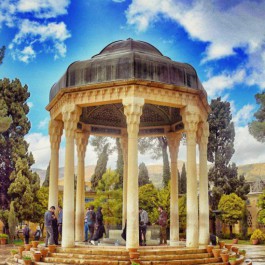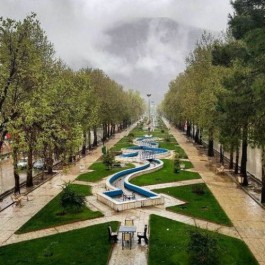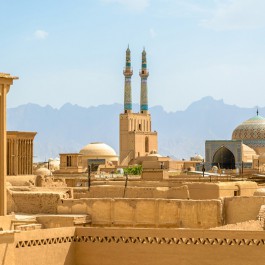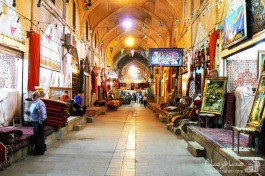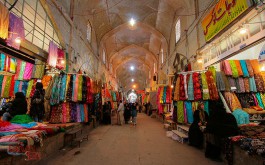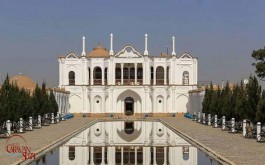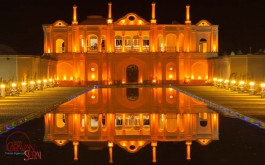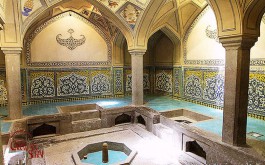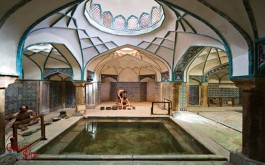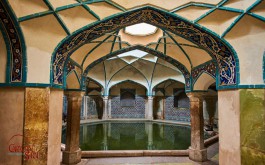Kerman is the name of a region that was called Carmania (Carmana) in ancient Persian. Kerman as a metropolis in Iran which is considered as one of the best places for arranging Iran exploration tours. Kerman city is the capital of Kerman province that is the vastest province in the south east of the country. According to 2016 national census, Kerman's population was 738,724 that make the city as the tenth populous city throughout the country. Kerman is one of the five historical cities of Iran and it is 13000 hectares in area. The city has been categorized as a metropolis due to its urban vastness and population. Slum dwelling is the most crucial problem in Kerman metropolis; thus, the city has been designated as the pilot project for the electronic government. Kerman city is situated at an elevation of 1756 meters above sea level which is considered as the third capital of Iran's provinces in terms of high elevation. Comparing Kerman to the other semi- arid cities of Iran, it has moderate climate due to its high elevation above sea level. Significant historical events have occurred in Kerman; therefore, the city has also been known as the fifth city of Iran with valuable historical background. Numerous Iranian and foreigner tourists annually attend Kerman tours to visit its approximately 7000 historical attractions.
Ganj Ali Khan
Ganj Ali Khan was an influential person who was the governor of Kerman between the years 1596 to 1625 AD (simultaneous to Shah Abbas the Great, in Safavid era). He commanded to build many structures for citizens' welfare including an equipped public bath. The bath is 11000 square meters in area which is considered as one of the city's touristy attractions. Furthermore, the complex consists of different parts including bath, mosque, Ab Anbar (a traditional water reservoir), Garm Khane, etc. This spectacular bath was registered as Iran's national heritage in April 1968 because of its historical significance and architectural characteristics.
Jabalieh Dome
Jabalieh Dome is one of the most mysterious attractions of Kerman which its precise background has not yet been discovered. Some people are on this assumption that the dome was constructed in the late Sasanian Empire and it was renovated in the early post- Islamic era. However, some other attributes the dome's construction to the era of Seljuq dynasty. Apart from the unknown date of the dome's construction, the primary use of the building has not yet been revealed. There are diverse assumptions regarding the use of Jabalieh Dome. Some believe that it was a fire temple, while the others think it was the tomb of the elders of Zoroastrianism. Additionally, it is narrated that Seyed Muhammad Tabashiri was buried there. Nevertheless, Jabalieh Dome, also known as Gabri Dome, has been preserved after many years and it is considered as one of the must-see sites of Kerman province. In 2004, the building use was changed to the Stone Museum. In the remained handwriting of a British general and geographer, which dates back to 120 years ago, it was quoted that "As you pass the cemetery you will see an octagonal building with a crescent-shaped dome and a circle section made of brick that its inner diameter is 18 feet. This place is called Jabalieh and is the only building of Kerman which was made of stone.
Fath Abad Garden- Mansion
Fath Abad Garden- Mansion, also known as Biglar Beigi Garden, can be mentioned as a touristy attraction of Kerman remained from Qajar dynasty. The garden is located in a 25 kilometers distance to the city center; additionally, the complex was registered as a national heritage in 2002. The garden is 13 hectares in area and a building in the style of Iranian- European architecture was constructed on an area of 1500 square meters of the garden. Reflection of the building on its beautiful front pond is magnificent. The complex consists of diverse parts including the main two-storey building with surrounding arcades built of raw clay and mortar. Hokam Museum of Kerman, the painting room, the four-season mansion, and land plots for cultivating medical herbs are other parts of this touristy attraction.
Harandy Garden Museum
Harandy Garden Museum is the museum of archeology and music in Kerman. This historical building is considered as an attraction of the city belongs to 1874 AD. The building was constructed by Muhammad Reza Khan Adl-al Soltan who was a top-ranked military officer in Kerman. Twenty three years later, Abolqasim Harandy had bought a 25000 square meters garden for 400,000 IRR. Reza Khan (The king of Iran, 1925-1941) had resided there for a few days on his exile journey which led to the fame of Harandy House. Many years later, in 1975 AD, the landlord of Harandy House donated it to the Ministry of Culture and Islamic Guidance of Iran.
Grand Bazaar of Kerman
The Grand Bazaar of Kerman can be named as a city attraction; however, there is another Bazaar in Kerman which is truly worth- seeing called Vakil Bazaar. This part of Bazaar was constructed by Ismaeil Khan Vakil-ol Molk (the son of Fath Ali Khan Nouri) who was one of the most prominent businessmen of Kerman and also the steward of Prince Muhammad Mirza. Vakil Caravansary, Vakil Bazaar, Vakil Bath, Vakil Mosque, and Vakil Ab Anbar (the traditional water reservoir) can be named as just some parts of Vakil complex.
